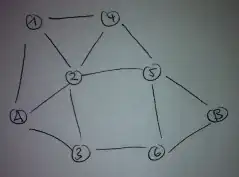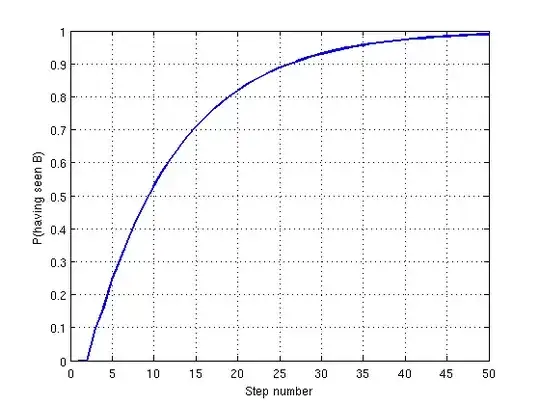To get specific first off, it's about this graph:

I want to get from $A$ to $B$. Every edge has the same length (e. g. 1 m). The shortest walk from $A$ to $B$ is easily found ($A-2-5-B$ and $A-3-6-B$). But how can I calculate the average length of a walk and its probability, when I am navigating randomly through this graph (what is the length/probability of $n$ steps)? At every node, there is a chance of $p= \frac{1}{degree}$ to choose any next edge (also back, where I just came from). For example, there would be a chance of walking in circles for a long time, but probability decreases - also to get straight through.
I wrote a computer simulation to find a statistic answer: After a megaattempt (1000000 attempts), it averaged at about 20.329 edges for this specific graph here.
I'd also like to know how to calculate such things in general, of course ;)
Path vs. Walk: Some authors (e.g. Bondy and Murty 1976) use the term "walk" for a path in which vertices or edges may be repeated, and reserve the term "path" for what is here called a simple path. - https://en.wikipedia.org/wiki/Path_(graph_theory)
